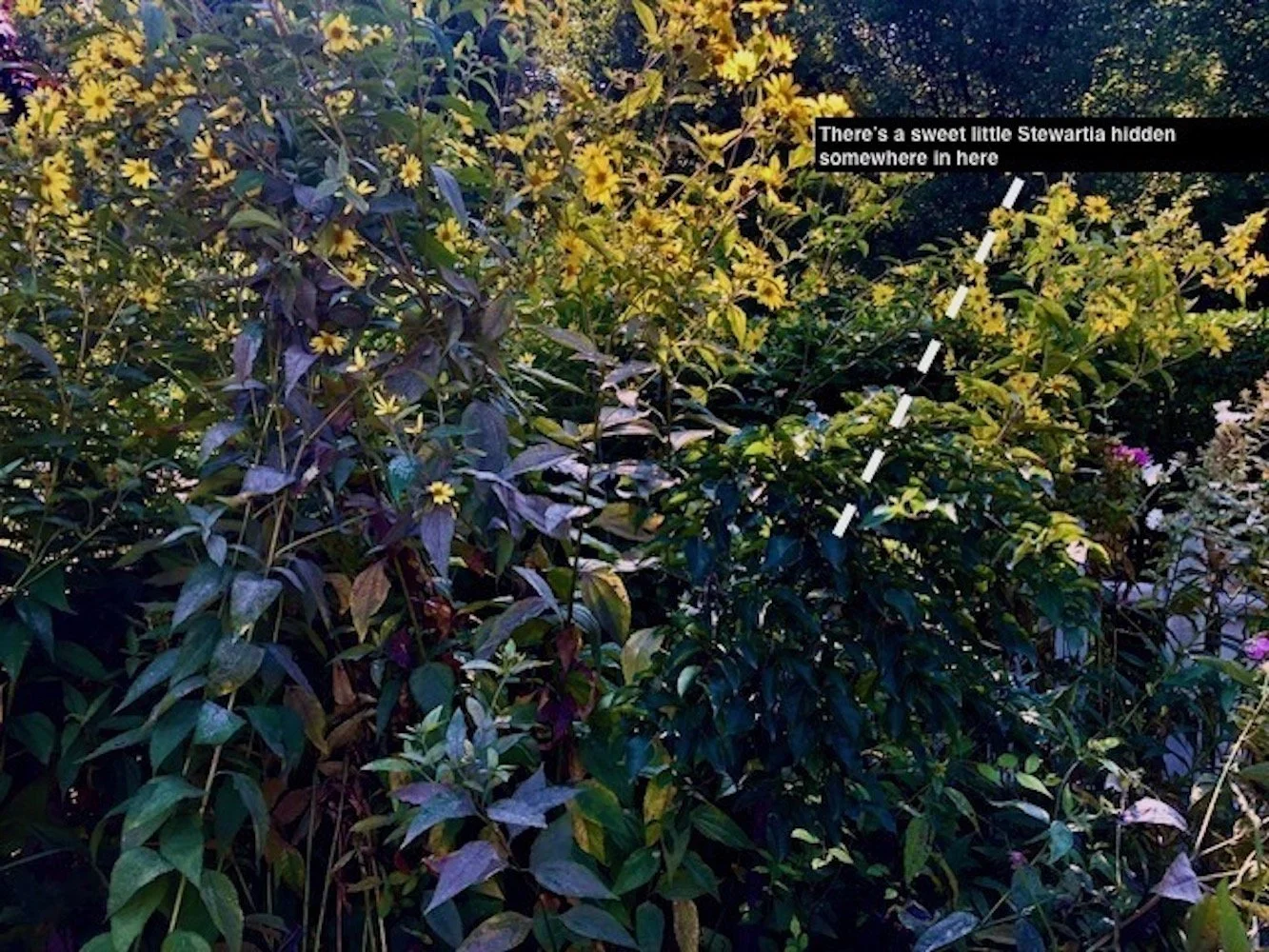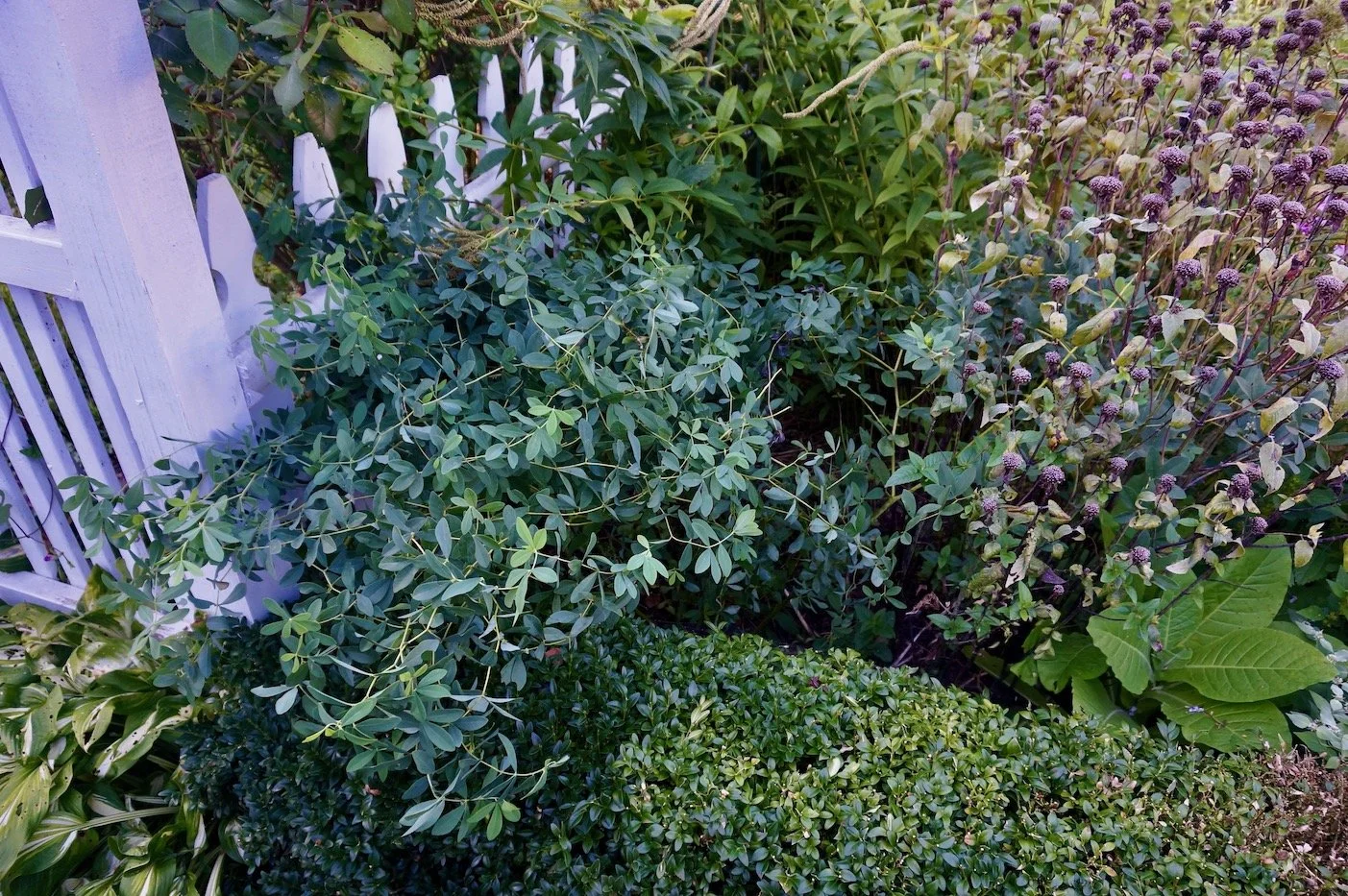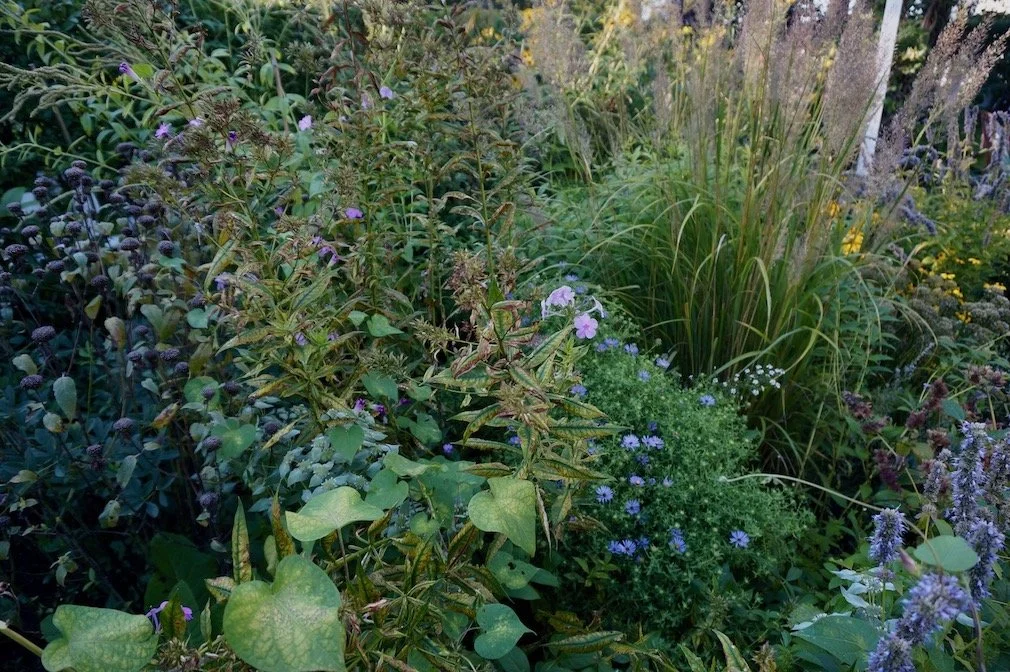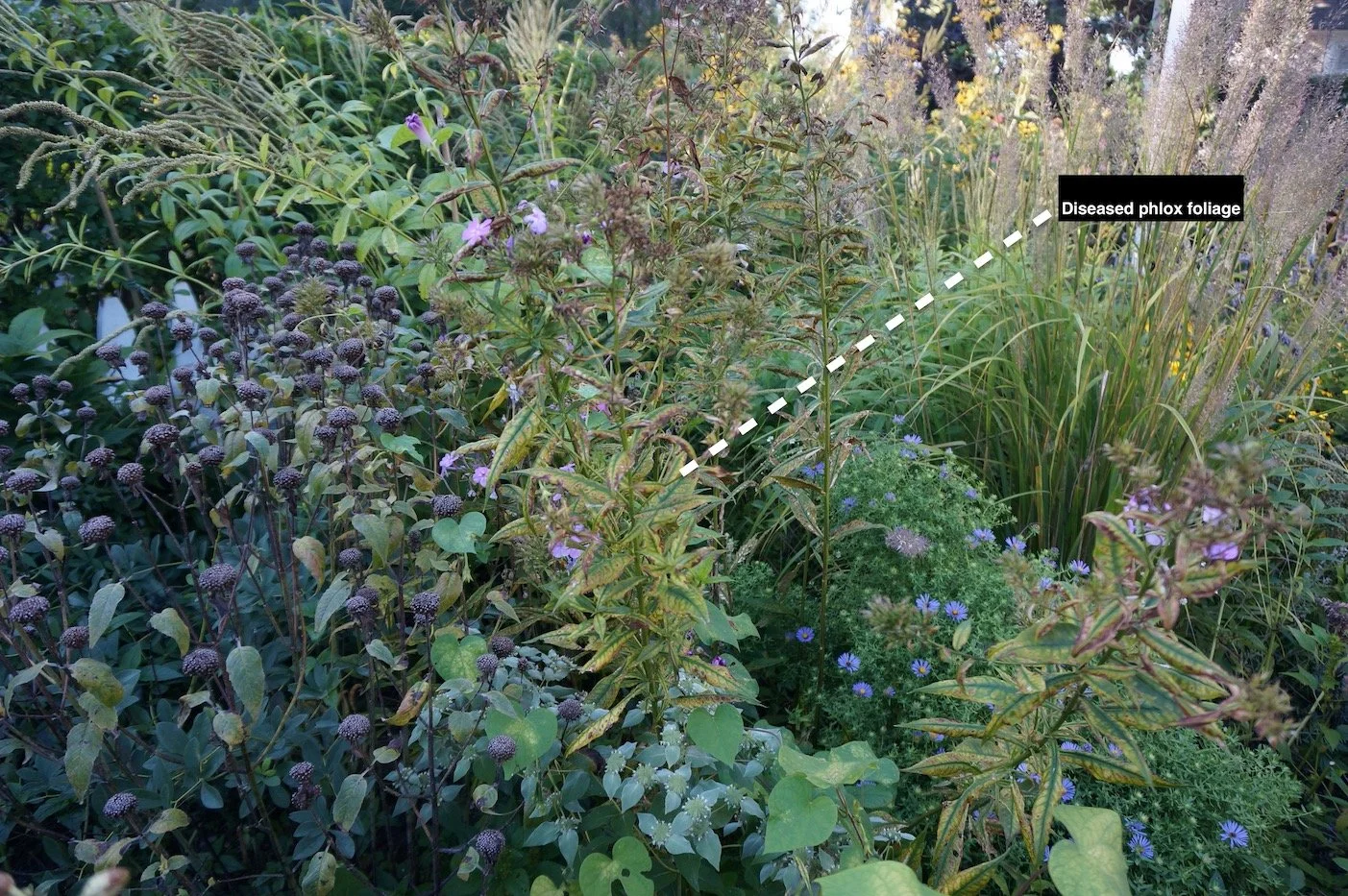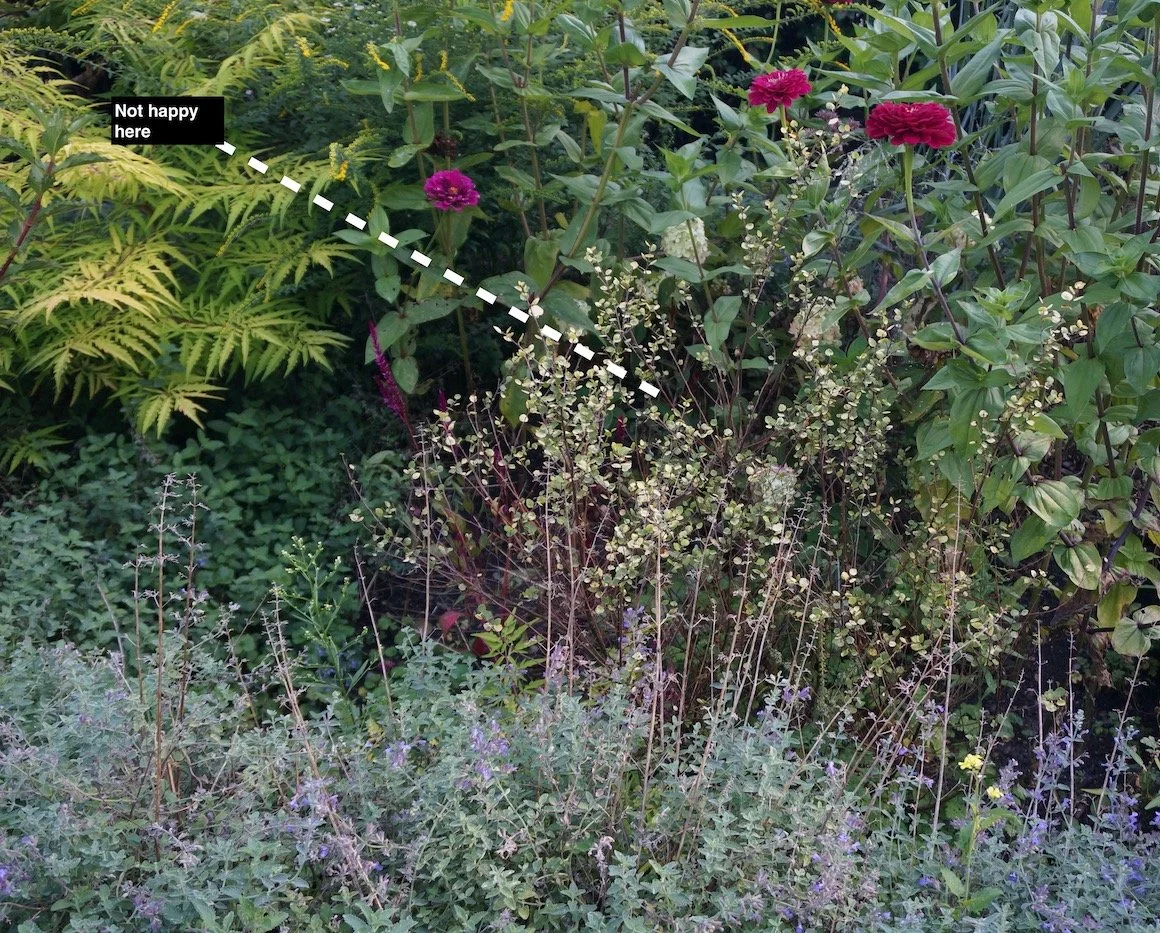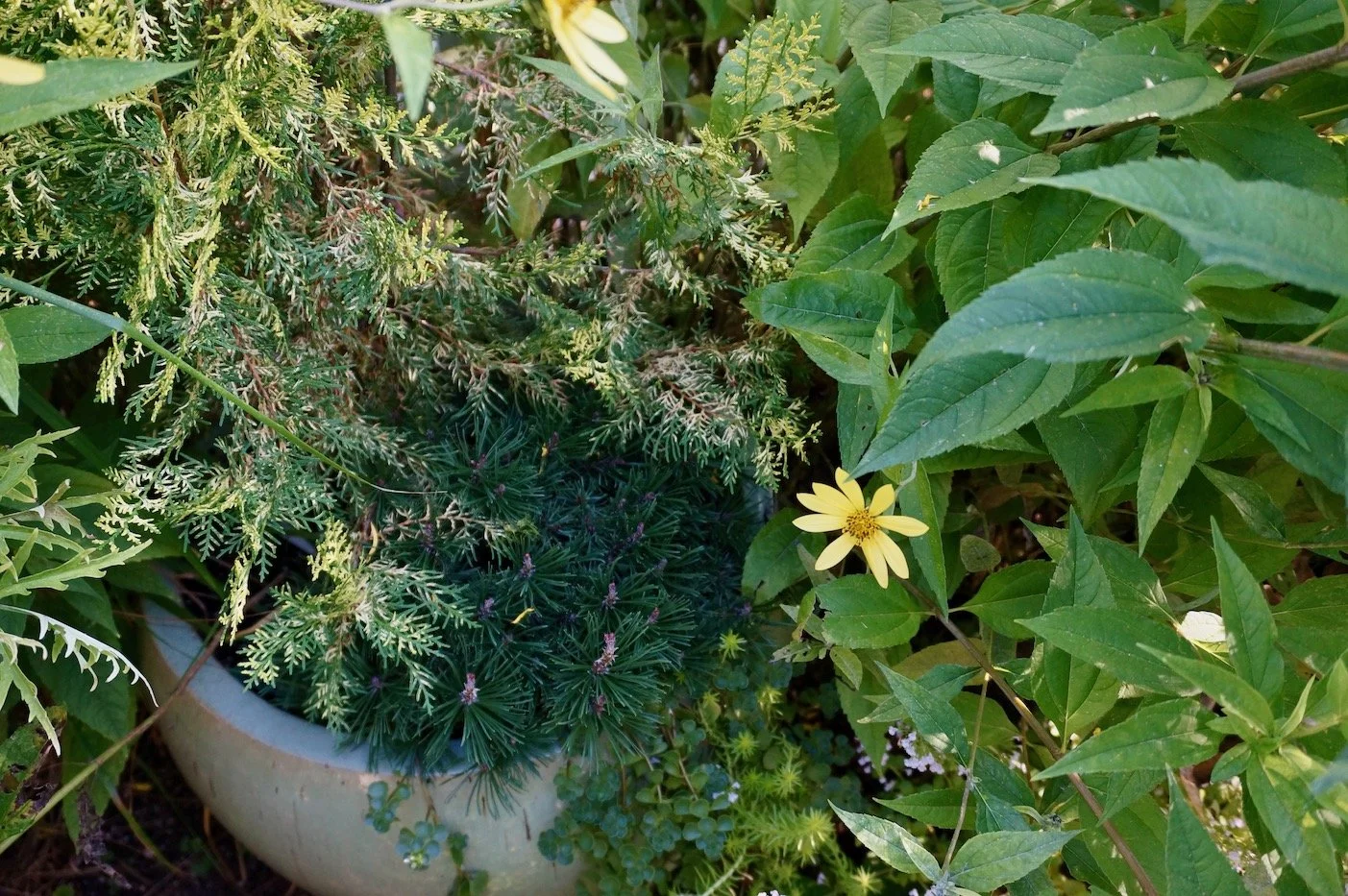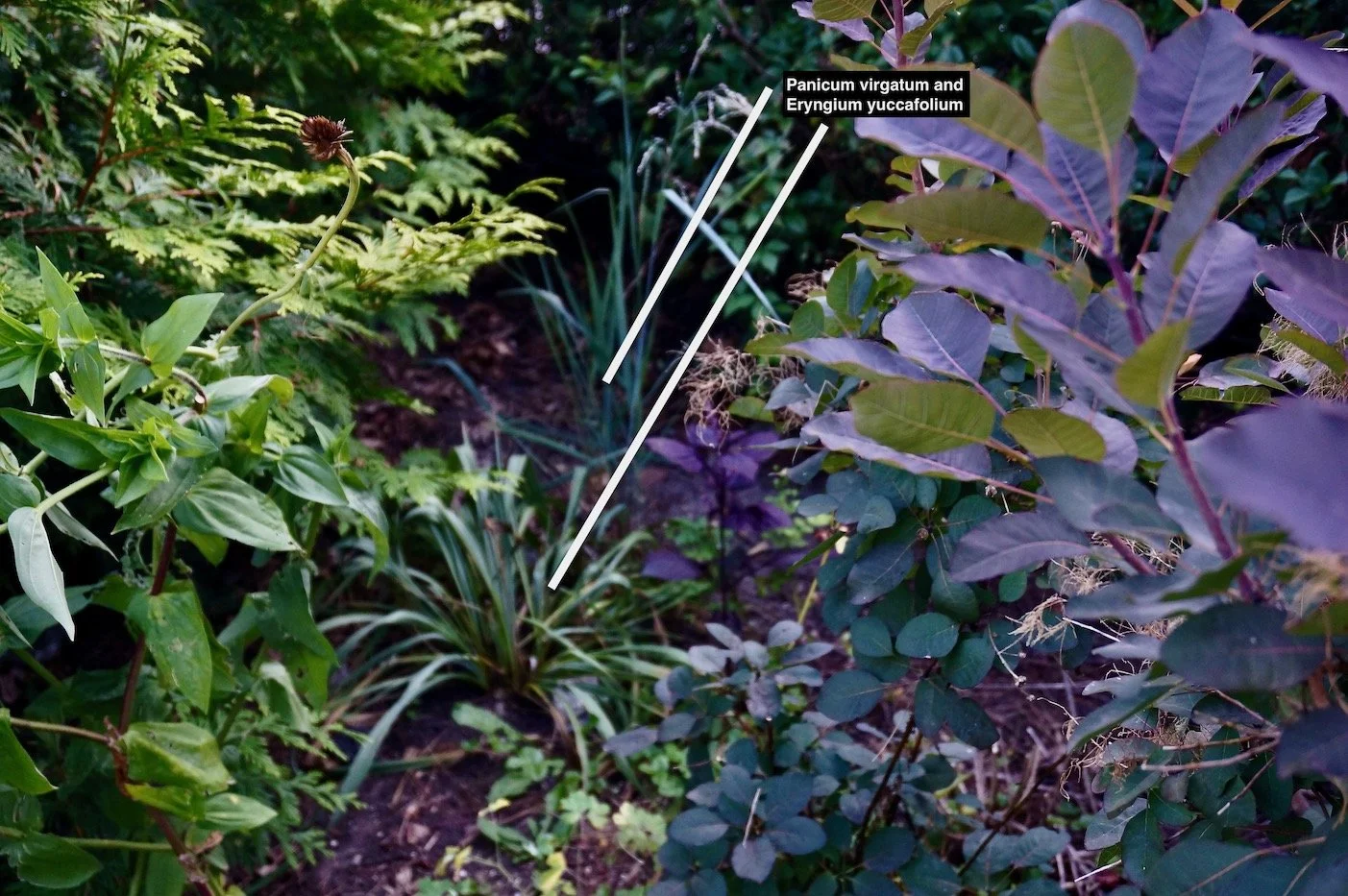Garden out of hand? Don't wait, shape it up now in four easy steps
A recent garden consultation with a friend prompted this month’s subject - making edits. In particular, perennial beds that have gone from naturalistic to what my friend referred to as “crossing the line into more chaotic territory.” At some point all gardens need editing, and perennial beds can seem particularly overwhelming - especially if you’re doing it on your own.
The temptation is to put it off til spring, but what the heck, why wait? A big advantage of attacking it now is that you can still see exactly what needs to be tweaked. It’s fresh in your memory bank. You probably won’t remember how much it bugged you by the time spring rolls around.
But there’s the overwhelming part of the equation too. If you’re anything like me, the thought of all that digging (sore feet, aching back, sleepless nights, indecision etc.) probably fills you with dread. I think the only recourse is to let go of the idea of getting everything done all at once. My own solution to alleviate physical and emotional angst is the bit by bit approach. If you can relate to any of this, please read on.
Take one bed at a time and make a list. Concentrate on the worst one first.
Too much of a good thing - plants overtaking one another, too many, aggressive or invasive varieties that should be tossed.
Plants with problems - diseased or just plain ugly and not worth keeping.
Plants that aren’t happy where they are - move to a better spot.
Hidden treasures you forgot about.
The perennial border in front of my house is a prime example of of all these issues. It’s crossed the line big time.
Too much of a good thing: This big blast of yellow in the below photo, Helianthus ‘Maximilian’ is tall, sturdy and the flowers are pretty. I used it here to screen the view of my driveway and it did a fine job. What’s not to like? Unfortunately, it doesn’t stay in it’s lane. Quite the vigorous traveler, so far it has eaten up about a quarter of the bed and shows no sign of slowing down. I planted a dwarf Stewartia in here a few years ago and can barely find it now.
I hesitate to get rid of it because I don’t want to see the driveway and I actually do like the flowers - just not quite so many please. I dug out a bunch to unearth the poor little tree. As I was digging I discovered a delightful rose, a favorite daylily and a bunch of other perennials I forgot I even had. So rewarding.
I cut a few things back so I could see where I was going and managed to liberate a good bit of space for something better. I’ll have to keep my eye on this helianthus if I’m going to keep it here.
Last fall I dug out the baptisia in the below photo and didn’t get all the roots - this is the result. It’s an excellent native perennial, but way too rambunctious for this bed. It has very deep tap roots that make it a pain (literally) to dig out. Onward to a new home!
Plants with problems: Moving along….. a big bunch of phlox that has developed the most unsightly fungus. I can’t bear to look at it. The friend who gave it to me warned me about it and now I see why.
It’s obviously prone to fungal problems and I don’t want to spray it. I’d rather try a more resistant variety. This one is outta here.
At the end of the garden bed - yep, more of that darn helianthus. I plunked it here years ago because I didn’t have anything else to fill the space. You can see it isn’t happy in this spot - the bottom browns out because it’s too dry. This batch is getting the deep six to make room for something more attractive. And what might that be? Possibly plants that are hiding elsewhere.
Unhappy plants that need to be moved: We all make mistakes. Here’s one I feel deeply guilty about, ‘Cesky Gold’ Dwarf Birch (Betula x plettkei) is gasping for life in my dry sandy soil. Poor thing. I knew I was skating on thin ice when I planted it, but couldn’t help myself when I saw it flashing gold leaves in a display bed at a local nursery. Sigh, I guess I’ll put it in a container or give it to someone with moister soil.
I looked around at the rest of my property to see what else I could use in the front beds and found a few that needed relocating. Alium ‘Millennium’ can take dry conditions, but give me a break - it’s duking it out with too many roots under a bunch of shrubs in another border. I’m moving it into the front perennial bed where it will have more room to spread out.
Here’s another candidate, Amsonia hubrichtii (Bluestar). Threadlike foliage that should turn gold in fall doesn’t stand a chance here - too much shade. It will be much showier once I move it to its new home in the sun.
Plants you forgot about: Hidden beneath the foliage of the helianthus I showed you earlier is a container of conifers I had forgotten about. Surely I can find a better home for this little dwarf pine Pinus mugo 'Slowmound' (a trial plant from Iseli Nursery) and the dwarf arborvitae Thuja orientalis 'Van Hoey Smith' behind it.
More perennials hiding in the bush - Panicum virgatum ‘Heavy Metal’ and Eryngium yuccafolium (Rattlesnake Master). They’re going to be obscured by the surrounding shrubs pretty soon and might look a lot better in that spot where the browned out helianthus is.
One bed at a time is manageable and it’s easier on the body. Having a plan makes the task of editing feel less overwhelming. I’m surprised at how much I’ve gotten done working in smaller bites in a more organized fashion. Slowing down has other rewards - it’s exciting to find those hidden surprises!


